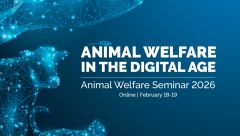Every year, about $3 billion is spent worldwide on animal tests to ensure the safety of consumer products—including drugs, chemicals, food, and cosmetics. While pesticides and drugs are extensively tested, food additives are mostly not, and the testing of cosmetics is even banned in some parts of the world. But what are these tests worth when a common, relatively safe drug like aspirin fails most of them? What does it tell us that 23 of 31 tested ingredients in coffee produce cancer in rats (other than humans are not 70 kg rats)? How many business and regulatory decisions are made on this flawed data? How many potentially useful or even life-saving drugs never made it to the clinics?
Over the last two decades a biotech revolution has taken place, which has delivered the proof-of-principle that we can do things differently. Roughly fifty alternative methods have been internationally validated and are increasingly used to establish product safety. The current alternative methods are used mainly to test for acute and local effects (such as skin sensitivity and eye irritation), but they serve as door-openers for a new era in regulatory science.
Exciting technical advances underlie the next generation of safety tests. New technologies can visualise and pinpoint what is happening when substances harm a tissue on a molecular level. Major advances include the development of miniature ‘organs-on-chips’ to test drugs and ‘virtual experiments”’ using computer modelling. Testing strategies which integrate a variety of tools may ultimately replace animal experiments entirely.
The emergence of new scientific tools for creating safer products (including ‘green’ toxicology for the design of the next generation of non-toxic substances) also allows quicker and less-costly development and manufacturing. Of course, it is crucial that the new methods maintain high safety standards. Despite the culture of validation that clings to what many believe is excessive regulation, the acceleration of technologies is forcing us to develop new methods of quality assurance, from the establishment of best practices, to systematic reviews and meta-analyses inspired by Evidence-based Medicine (EBM). A new regulatory science has emerged—one that is evidence-based, humane, and predictive for human risk.






